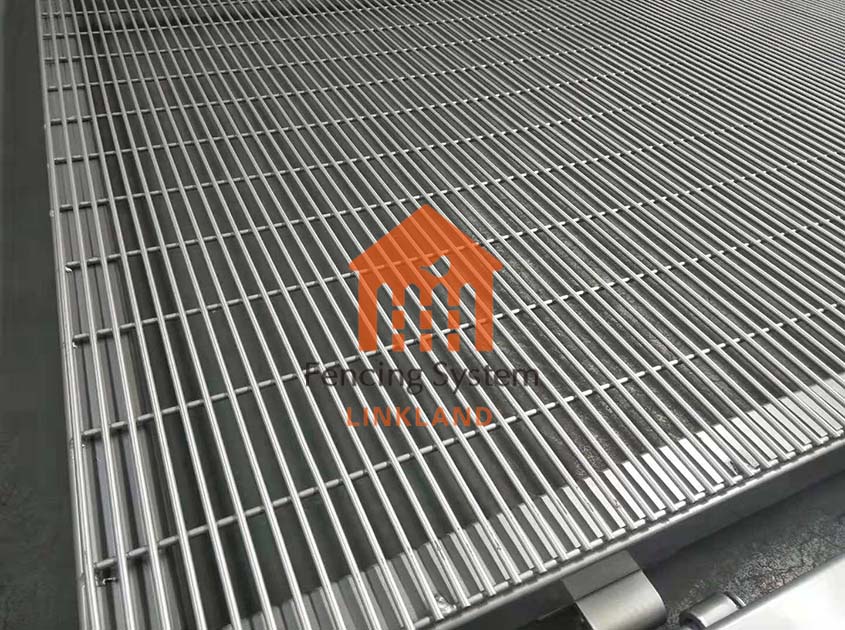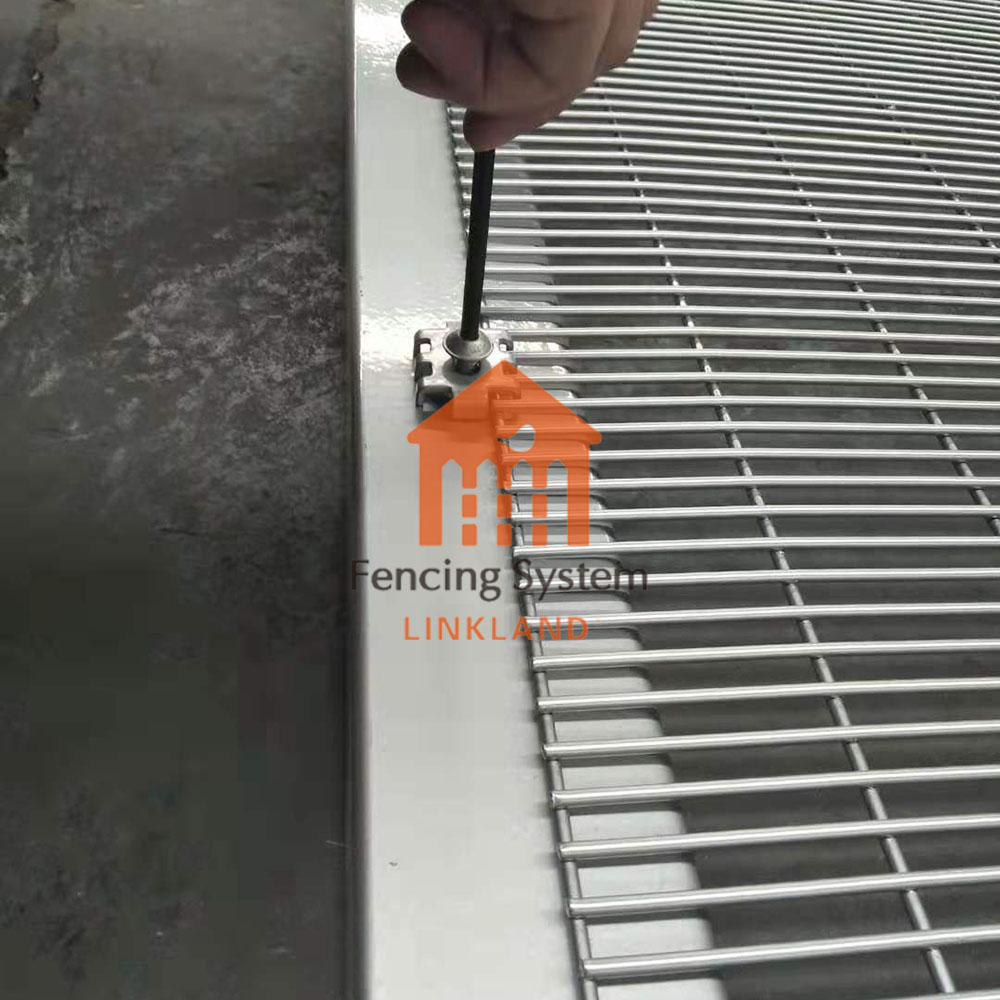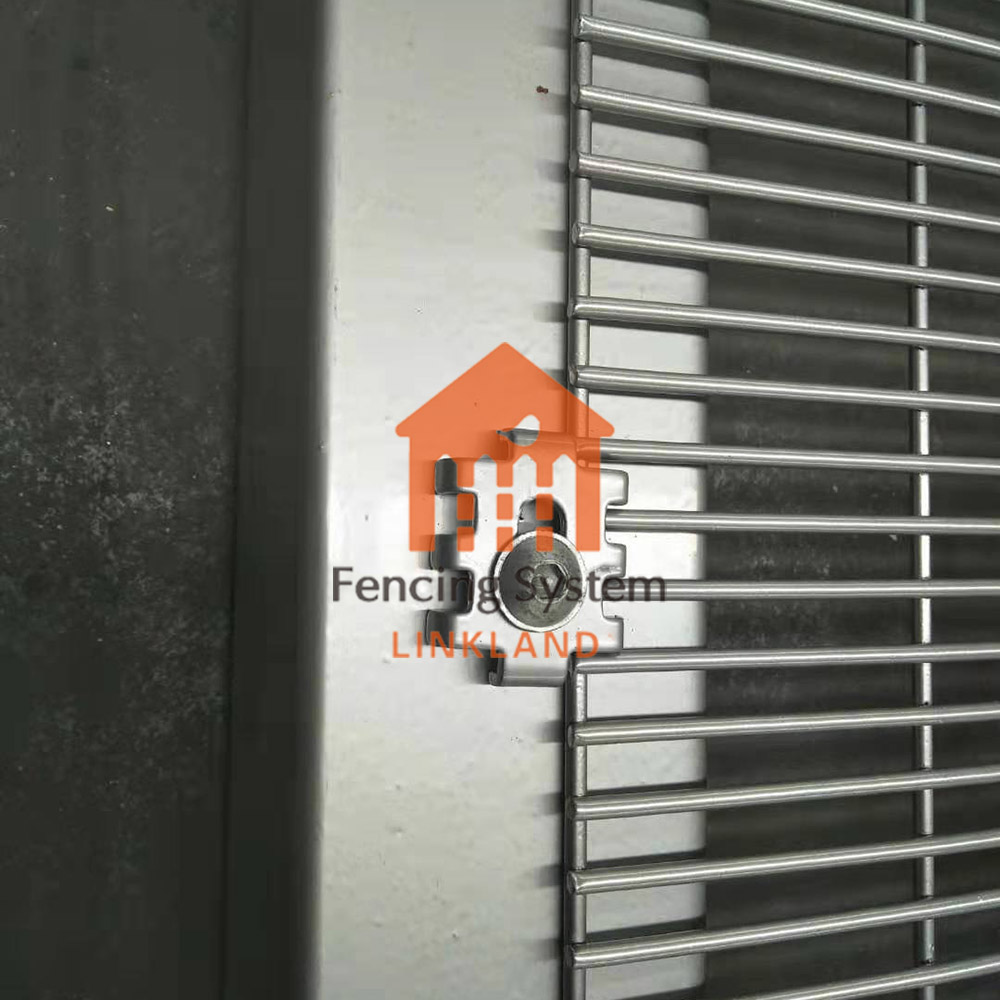- Home
- About Us
- Products
- Service
- Project
- News
- Contact Us
Pulished on Aug. 11, 2023
grid plate
One of the main components of an anti-climb fence is the mesh panel. Grid panels are planar structures made of a strong and durable material, usually a metallic material such as steel or aluminum. Mesh panels feature a tight mesh that prevents climbers from getting through or inserting fingers or toes, effectively preventing climbing and overturning.

column
Posts are the vertical structures that support the anti-climbing fence. They are usually made of strong metallic materials such as steel or aluminum. The number and spacing of posts depends on the length and height of the fence. Columns provide stability and support through a plinth or concrete foundation anchored to the ground.

top protection
The top of the anti-climbing fence usually has a special protective design to increase the difficulty of climbing. Common top guard components include spikes, barbs, and twisted metal strips, among others. These designs make it difficult for climbers to find stable support and reduce the likelihood of climbing.

Connectors and Accessories
Anti-climbing fences also include connectors and fittings for connecting and securing components between grid panels and posts. Common connections and fittings include bolts, screws, welded joints and special connection systems. These components ensure the stability and firmness of the fence against vandalism and break-ins.
By understanding the components of an anti-climb fence, we can better understand its design and function. Mesh panels provide a tight mesh, posts provide support and stability, top guards add to the difficulty of climbing, while connectors and accessories ensure the firmness of the fence. The combination of these components makes the anti-climbing fence can effectively prevent climbing and climbing behaviors, providing safety and protection.
What Are the Common Applications of Wire Mesh Fence in Construction?
Pulished on Dec. 15, 2025
Reasons Behind the Growing Demand for Security Fencing in the Middle East
Pulished on Nov. 28, 2025
Characteristics of Fence Demand in South American Construction Projects
Pulished on Nov. 28, 2025
How Middle East Distributors Can Quickly Evaluate the Quality of Wire Mesh Suppliers
Pulished on Nov. 24, 2025
What Type of Metal Fencing Is Best for Construction in the Middle East?
Pulished on Nov. 18, 2025
358 High-Security Fencing – Maximum Protection for Sensitive Sites
Pulished on Oct. 27, 2025
Welded Wire Mesh Fencing – Durable and Efficient Solutions for Global B2B Buyers
Pulished on Oct. 27, 2025
Cattle Fencing – Strong, Reliable, and Cost-Effective Solutions for Livestock Management
Pulished on Oct. 22, 2025
What Are the Common Applications of Wire Mesh Fence in Construction?
Pulished on Dec. 15, 2025
Reasons Behind the Growing Demand for Security Fencing in the Middle East
Pulished on Nov. 28, 2025
Characteristics of Fence Demand in South American Construction Projects
Pulished on Nov. 28, 2025
How Middle East Distributors Can Quickly Evaluate the Quality of Wire Mesh Suppliers
Pulished on Nov. 24, 2025
What Type of Metal Fencing Is Best for Construction in the Middle East?
Pulished on Nov. 18, 2025
358 High-Security Fencing – Maximum Protection for Sensitive Sites
Pulished on Oct. 27, 2025
Welded Wire Mesh Fencing – Durable and Efficient Solutions for Global B2B Buyers
Pulished on Oct. 27, 2025
Cattle Fencing – Strong, Reliable, and Cost-Effective Solutions for Livestock Management
Pulished on Oct. 22, 2025






 EN
EN SP
SP FR
FR
